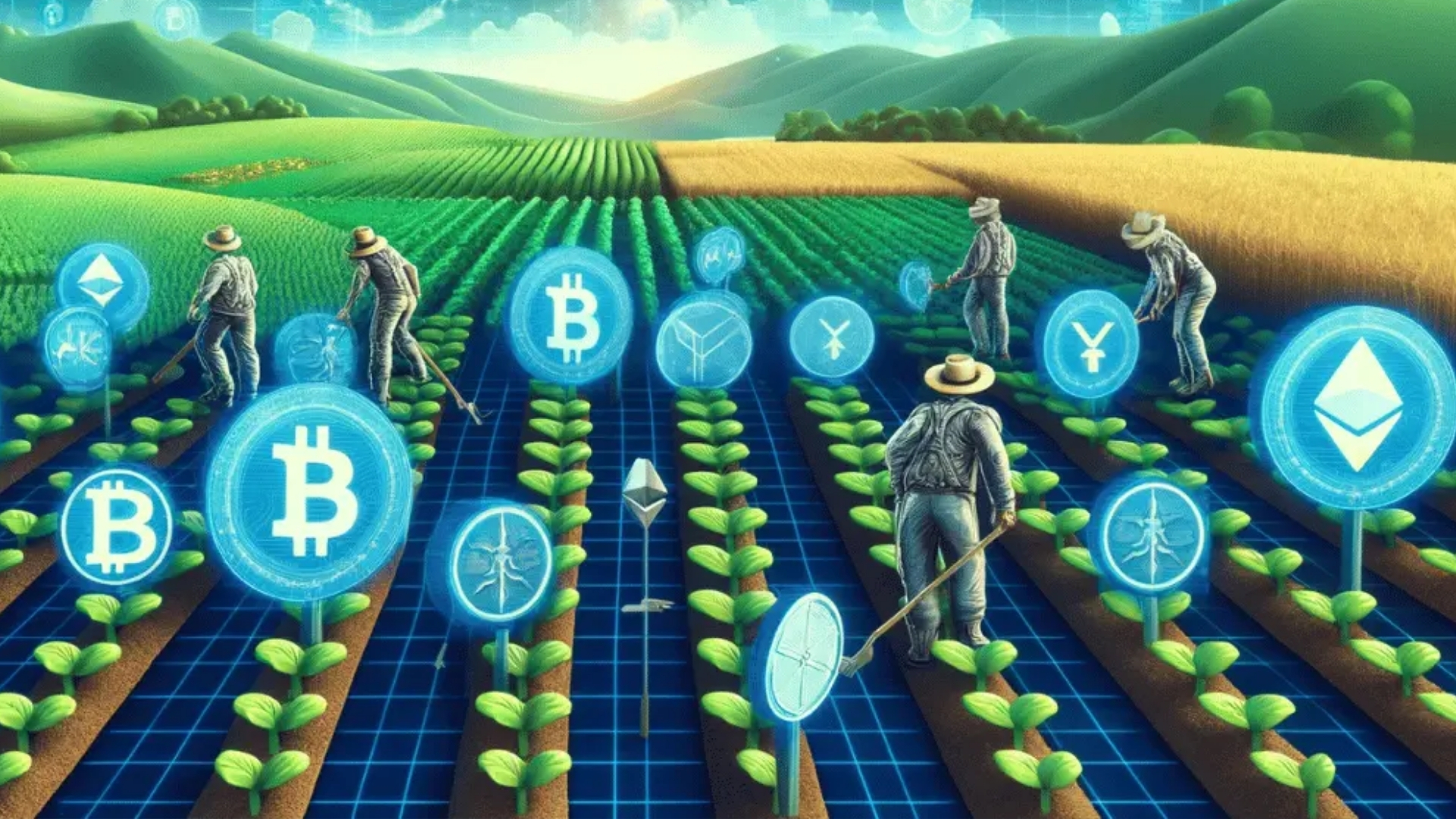What is Yield Farming?
Jump to section
The Beginner’s Guide to Yield Farming
Yield farming is a crypto trading strategy designed to maximize returns by providing liquidity to decentralized finance (DeFi) protocols. It operates within the realm of automated market makers (AMMs) like Uniswap and SushiSwap, which use liquidity pools to facilitate crypto asset trading without relying on traditional order books.
How Yield Farming Works
Yield farming involves several key steps:
Select a Platform: Choose a DeFi platform that supports yield farming and offers desired tokens for liquidity provision. Popular options include Curve (CRV), Compound (COMP), and yearn.finance (YFI).
Provide Liquidity: Deposit a pair of crypto tokens into a liquidity pool. For example, you might provide equal amounts of Ethereum (ETH) and a stablecoin like DAI. Different protocols may support various cryptocurrency assets depending on their blockchain networks.
Receive LP Tokens: Upon depositing, you’ll receive liquidity provider (LP) tokens representing your share of the pool. These LP tokens are crucial for staking and earning rewards.
Staking and Yielding: Stake your LP tokens on the same platform or another one offering yield farming. This strategy can yield additional rewards in the form of tokens. Yield farming platforms often display rates as annual percentage yield (APY).
Claim and Reinvest: Periodically, claim your rewards and decide whether to reinvest them to compound gains.
Benefits of Yield Farming
Yield farmers contribute to liquidity pools by depositing pairs of tokens, such as Ethereum and a stablecoin. These pools enable other DeFi users to swap tokens anytime without needing to wait for a suitable counterparty. In return for contributing liquidity, yield farmers receive LP tokens, which represent their share of the pool’s assets. Each time a trader uses these liquidity pools, they’re charged a transaction fee, which is collectively distributed among LP token holders.
In some instances, DeFi platforms may also distribute native governance tokens to LPs as additional rewards. This incentivizes participation and decentralizes decision-making, shaping the protocol’s future.
Risks of Yield Farming
While yield farming offers attractive returns, it comes with significant risks. Here are the three main dangers every crypto trader should consider:
– Impermanent Loss
Liquidity providers can sometimes make a lower return on their deposited assets compared to holding them without participating in a liquidity pool. This phenomenon is known as impermanent loss and often occurs due to extreme volatility in the crypto market.
It’s worth noting that impermanent loss is often an unrealized loss, meaning it only becomes a realized loss if the LP redeems their tokens when the value of their deposited tokens is lower. LPs may benefit from waiting for transaction fees or staking rewards to offset any losses or see if asset prices recover over time.
– Smart Contract Exploits
Smart contracts are crucial pieces of computer code that enable DeFi platforms to operate autonomously. However, these programs can contain bugs or vulnerabilities that attackers can exploit, leading to loss of funds or manipulation of rewards.
The Solana wormhole exploit is a notable example. A hacker discovered a bug that allowed them to mint 120,000 wrapped wormhole Ethereum (whETH) without collateral, redeeming the tokens for ETH totaling $320 million. Independent code audits can minimize this risk, but some vulnerabilities can still go unnoticed.
– Rug Pulls
A rug pull is a type of scam in the DeFi space where bad actors create a new project or protocol with its own native token. They create a liquidity pool for the token and retain a majority of its supply. They then attract users to contribute to the pool by adding a popular cryptocurrency like ETH or a stablecoin.
Once the pool grows to a certain size, the founders flood the pool with their stash of native tokens and remove all the popular cryptocurrency. This action crashes the value of the project’s native token to zero, leaving everyone with a worthless cryptocurrency while the scammers make off with the valuable assets.
Conclusion
Yield farming represents a powerful tool for maximizing returns in the DeFi ecosystem. However, it requires careful consideration of the associated risks. By understanding the mechanics of yield farming and the potential dangers, you can better navigate this complex landscape and make informed decisions.

